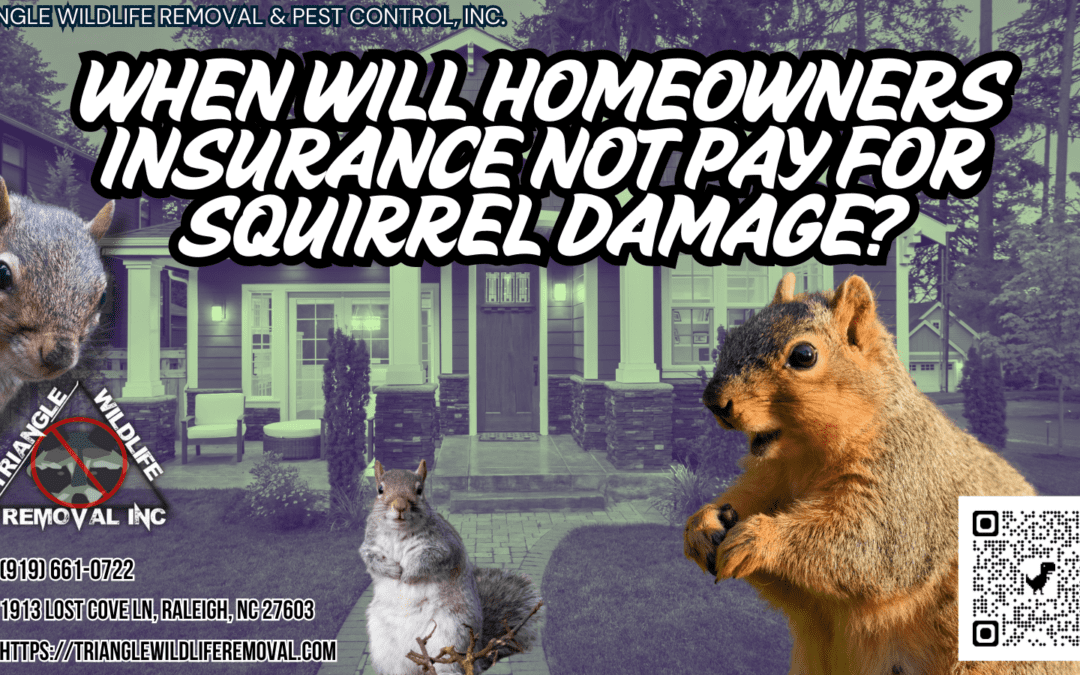Homeowners insurance provides valuable protection, but there are instances where squirrel damage may not be covered. Understanding the nuances of your policy is crucial, as exclusions related to negligence in property maintenance or lack of direct physical damage can impact coverage. Additionally, the presence of an infestation or a specific rodent exclusion clause could limit your ability to file a claim. Factors like wear and tear or gradual deterioration may also come into play. It’s essential to grasp these key points to ensure you’re prepared for potential scenarios where insurance might not provide the expected support.
Key Takeaways
- Damage from squirrels may not be covered by insurance policies.
- Negligence in property maintenance can lead to coverage exclusions.
- Direct physical damage is crucial for insurance coverage of squirrel-related incidents.
- Insurance may exclude coverage for damages caused by infestations or rodent activity.
Exclusions in Your Homeowners Insurance Policy
Exclusions delineated in your homeowners insurance policy specify situations where coverage is not extended. Understanding these exclusions is crucial to grasp the full extent of your policy limits and coverage options. Common exclusions often include damage caused by pests such as squirrels, rodents, or insects. While your policy may cover sudden and accidental events like a burst pipe, it may not extend to gradual damage caused by pests over time.
In the event of squirrel damage, it’s essential to review your policy to determine if such incidents are covered. If not, you may need to explore additional coverage options or consider setting funds aside to address potential damages. It’s also important to be aware of the claims process and deductible amounts associated with your policy. This knowledge can help streamline the claims process and provide clarity on your financial responsibilities in the event of damage not covered by your homeowners insurance.
Negligence in Property Maintenance
Property maintenance negligence can lead to potential risks and liabilities for homeowners. Preventable incidents, such as squirrel damage, can occur when proper maintenance is overlooked. Failing to address issues like deteriorating roof shingles or gaps in the attic can create entry points for squirrels and other pests. These animals can cause significant damage once inside, leading to costly repairs that may not be covered by homeowners insurance if negligence is deemed the cause.
Regular inspections and timely repairs are essential in preventing squirrel infestations and subsequent damage. Homeowners should prioritize tasks such as repairing any exterior damage, trimming overhanging branches, and securing potential entry points to avoid attracting squirrels. By taking proactive measures and staying vigilant, homeowners can mitigate the risks associated with property maintenance negligence. Remember, when it comes to protecting your home from squirrel damage, prevention through proper maintenance is key.
Lack of Direct Physical Damage
A common reason homeowners insurance may not cover squirrel damage is due to the lack of direct physical damage caused by these pests. While squirrels can create disturbances and nuisances around properties, such as chewing on wood, wires, or insulation, insurance policies typically require direct physical harm to the structure for coverage to apply. In cases where the squirrels have not caused visible physical damage, the insurance company may deem the situation outside the scope of coverage.
However, it’s essential to note that even without direct physical harm, squirrel activity can lead to indirect financial loss for homeowners. For instance, squirrels nesting in attics or walls can pose fire hazards due to their tendency to chew on electrical wiring. Additionally, the environmental impact of squirrels living in close proximity to humans can create health and safety concerns, although these factors may not always be covered under standard homeowners insurance policies. Homeowners should consider preventative measures and potential additional coverage options to mitigate risks associated with squirrel presence.
Infestation or Rodent Exclusion Clause
Amid concerns related to squirrel damage, insurance coverage may introduce clauses related to infestation or rodent exclusion. These clauses are designed to specify instances where coverage may be limited or denied due to issues related to infestation or rodent activity. When it comes to squirrel damage, here are some key points to consider:
- Prevention strategies: Insurance policies may expect homeowners to take proactive measures to prevent infestations or rodent activity. Failure to implement these prevention strategies could impact coverage eligibility.
- Wildlife control techniques: Insurance companies may require homeowners to address wildlife control issues promptly. This could involve seeking professional assistance to remove squirrels or rodents from the property.
- Exclusion of coverage: In some cases, policies may explicitly exclude coverage for damages caused by infestations or rodent activity. It is essential to review policy details to understand the extent of coverage in such situations.
- Documentation requirements: In the event of a claim related to squirrel damage, insurers may request documentation regarding prevention efforts and wildlife control measures taken by the homeowner. Failure to provide adequate documentation could lead to claim denial.
Wear and Tear or Gradual Deterioration
When assessing squirrel damage claims, insurance providers often scrutinize whether the damage is a result of wear and tear or gradual deterioration. Wear and tear refer to damage that naturally occurs over time due to regular use or aging. Gradual deterioration, on the other hand, involves damage that happens slowly due to various factors like weather conditions and environmental influences. Insurance companies typically do not cover expenses related to wear and tear or gradual deterioration as they are considered expected outcomes of a property aging.
Wear and Tear vs. Gradual Deterioration
| Wear and Tear | Gradual Deterioration |
|---|---|
| Natural causes, aging | Weather conditions |
| Regular use over time | Environmental factors |
Insurance policies are designed to protect against sudden and accidental damages rather than issues stemming from long-term wear or environmental factors. Therefore, it’s crucial for homeowners to regularly maintain their property to prevent such gradual deterioration that may not be covered by insurance.

